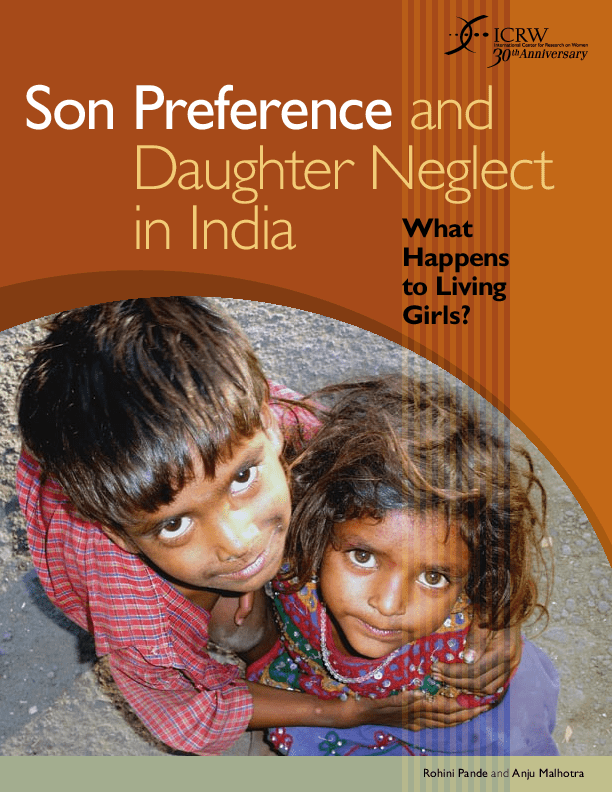
Resources
Son Preference and Daughter Neglect in India
Resource date: 2007
Author: UNFPA
Publisher: UNFPA

Resources
Resource date: 2007
Author: UNFPA
Publisher: UNFPA
For more than 100 years, the Indian census has shown a marked gap between the number of boys and girls, men and women. This gap, which has nationwide implications, is the result of decisions made at the most local level—the family. Common wisdom is that the preference for sons is motivated by economic, religious, social and emotional desires and norms that favor males and make females less desirable: Parents expect sons—but not daughters—to provide financial and emotional care, especially in their old age; sons add to family wealth and property while daughters drain it through dowries; sons continue the family lineage while daughters are married away to another household; sons perform important religious roles; and sons defend or exercise the family’s power while daughters have to be defended and protected, creating a perceived burden on the household.